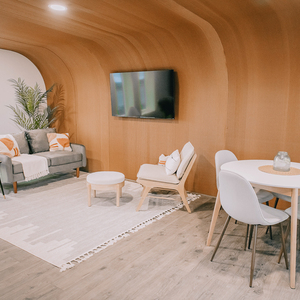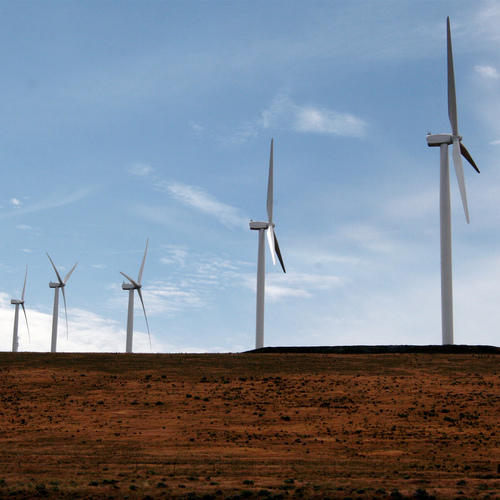
Image Credit: Ossip van Duivenbode
The building measures only 86 square feet, barely big enough for a sofa, but DUS Architects is betting it represents a method of building that is cheaper, faster and less wasteful than conventional construction.
The Urban Cabin was made from a linseed-oil based “bio-plastic” with a 3-D printer and installed as an “urban retreat” with its own tiny park and outdoor bathtub in a former industrial part of Amsterdam.
Although the cabin can be rented for short stays, no one is really going to live there. DUS Architects sees the structure as part of its ongoing research into “compact and sustainable dwelling solutions in urban environments.”
DUS says the technology is well suited for small, temporary dwellings — in disaster areas, for example. The material can be shredded and turned into new buildings when the original structure is no longer needed.
DUS is part of the rapidly growing experimentation in 3-D printing technology that can reduce production time by 50% to 70%, labor cost by as much as 80% and construction waste by as much as 60% over conventional building, according to a report at Construction Dive.
DUS also is involved in a three-year project in Amsterdam to create the demonstration Canal House, also a 3-D printed structure.
Printed buildings can be very large
The technology is not limited to tiny, experimental structures. In an earlier report, Construction Dive described a five-story apartment building in a Chinese industrial park created with a very large 3-D printer by WinSun Decoration Design Engineering Co. The apartment building stands next to a 1,100-square-meter mansion created entirely with a 21-foot by 33-foot printer. The mansion, as well as its contents, were made with a material blending glass fiber, steel, cement, hardening agents, and recycled construction waste.
WinSun has met with Saudi Arabian officials on a potential project to print 1.5 million homes over the next five years to address a housing shortage among middle-class citizens. Earlier this year, Dubai announced its intent to build one-quarter of all new city buildings with 3-D printing by 2030.
In the U.S., Tennessee-based Branch Technology said it would begin construction next year of a futuristic single-family home picked in a design competition, the website 3ders.org reported.
Branch’s “C-Fab” technology extrudes a carbon-fiber-reinforced ABS plastic that can be covered with conventional materials, such as concrete or spray foam, according to the website.
Weekly Newsletter
Get building science and energy efficiency advice, plus special offers, in your inbox.















4 Comments
No one is really going to live there
Tiny houses are growing (pun intended) in numbers, and people do live in them, they have even been covered on GBA.
That said i am enthusiastic about the potential of 3D printing houses.
Over 10 tries and the captcha won't let me post my edit argh!!!
Response to Alan B
Alan,
Sorry to hear about your difficulties with the CAPTCHA hurdle.
GBA wants to fix the CAPTCHA problem. Please email me so I can help. Here is my email address:
martin [at] greenbuildingadvisor [dot] com
Again, our apologies.
Alan B
I think 3d printing has a whole range of interesting possibilities. but I'm still struggling to see what problem it solves in building construction.
3D Printing
The question is not IF we'll be printing houses, the question is when. The printers themselves are really nothing new -- X,Y,Z axis machines that have been cutting and welding and and shaping materials for years.
It's the "ink" in these printers that will evolve. The Chinese printer mentioned above uses a concrete "ink' that hardens fast enough to allow layers to be applied around the perimeter of the structure.
There are already printers that print with multiple print heads and different "inks." Int's not far fetched to imagine a printer that prints an entire "perfect" wall using inks that approximate drywall, insulation, sheathing and cladding, all in one pass. Then add copper for wiring, pex for water and waste, and the homeowner moves in after the VOC's dissipate.
Log in or create an account to post a comment.
Sign up Log in